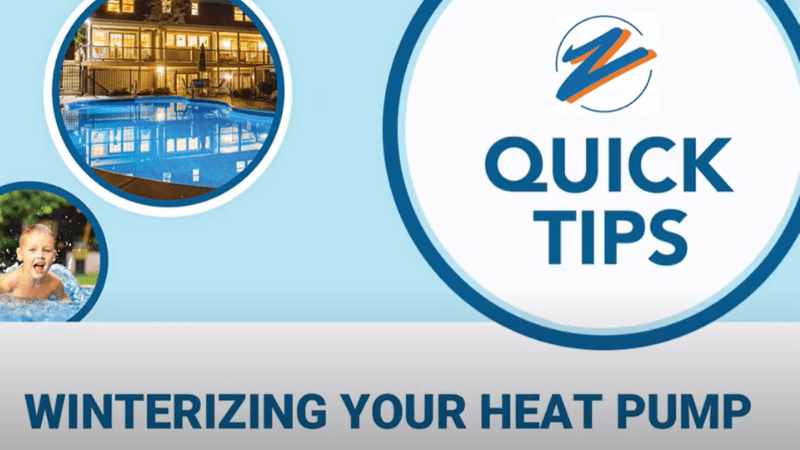
Today, we’re going to talk about the simple but important task of winterizing your heat pump.
First, turn off the control panel. If anything on the control panel is lit up, it’s still on, so make sure you turn it off before proceeding.
For above ground pools, disconnect the unions. Depending on the model, the unions may be on both sides or in front of the heat pump. Once you’ve disconnected the unions, blow through the lines with a Shop Vac. Let the Shop Vac run for a good minute or two. Even though there may not be a lot of water coming out, there are a lot of little spots where water can hide, so it’s important to make sure you get all that out of there. Continue blowing until water completely stops coming out the other end.
Once you’ve disconnected the unions and blown all the water out, we recommend covering or plugging the ends to keep all the furry woodland creatures out over the winter. You can use a plug or even duct tape to seal the ends and prevent unwanted visitors.
If you have an in-ground pool, your heat pump should stay connected all year. The water will be blown out at the same time you’re blowing the lines from the pool skimmer, so there’s no need to disconnect it at all.
To Cover or Not to Cover Your Heat Pump?
In the great debate over whether to cover your heat pump over the winter, we take the side of not covering it. One good idea is to put a piece of plywood over the top of the fan to prevent snow and leaves and other debris ending up in the bottom of it, but fully covering the heat pump can hold in moisture, which can rot things out.
We also recommend placing moth balls around the base of the heat pump or any other equipment you have. Again, this prevents the woodland creatures from using it as a place to stay warm over the winter.
Your pool is a big investment, so you want to make sure you take care of it the best you can.
Have Questions?
Whether you have questions about winterizing your heat pump, closing your above-ground or in-ground pool, or something else, contact us – we’re always here to help.